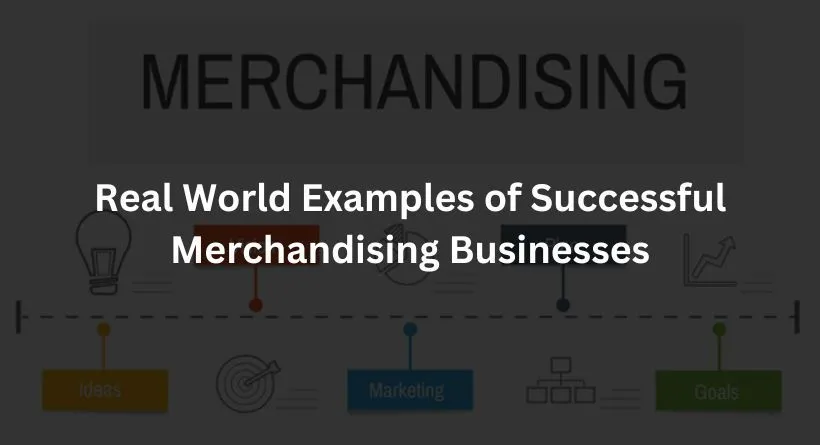You’re grappling with the daunting challenge of starting or improving your merchandising business. It’s an uphill task, no doubt. You’re losing sleep over understanding the intricacies of the merchandising business. Questions like ‘How does it work?’ or ‘How do successful companies do it?’ haunt your days and nights. We acknowledge these valid concerns and have good news for you; this is the right place for the solution.
In this blog post, we will dissect the mechanics of a successful merchandising business, providing a comprehensive understanding of its structure, operations, and strategies. We’re not merely promising theoretical concepts, but will also lay out actionable insights that you can implement in your business right away. By connecting the theoretical understanding with real-life examples, we’re determined to make this complex issue easily digestible.
Painful as it may be, dealing with the intricacies of a merchandising business is a necessary ordeal. But isn’t it comforting to know that a resolution is within your reach? By the time you finish reading this, you’ll have gained an understanding of the merchandising business that many spend years trying to grasp. So let’s embark on this journey together, through the exciting world of the merchandising business.
Understanding the Merchandising Business
The term “Merchandising Business” can seem a bit vague at first glance. But once you grasp its core principles, it becomes a compelling world of strategic planning, meticulous organization, and market trends.
Definition of Merchandising Business
In its simplest form, a merchandising business involves selling products to consumers. It’s not about manufacturing the products, but rather acquiring them from suppliers and selling them at a profit. Think about your local grocery store or online retailers like Amazon. They are prime examples of merchandising businesses. They source products from various suppliers, create an attractive platform to showcase them, and sell them to end consumers.
The Core Structure of Merchandising Business
Let’s dig a little deeper into the core structure of a merchandising business. This model operates in three significant steps. First, it acquires products from suppliers or manufacturers. Then, it advertises or presents these products to potential customers through physical store displays or digital platforms. Finally, it completes the cycle by selling the products to consumers.
Think of this like a conveyor belt at the airport. Products are checked in (sourced), displayed on the belt (advertised), and then collected by the right passenger (sold). An efficient merchandising business is like a well-oiled machine, keeping this conveyor belt moving smoothly and swiftly.
Importance of a Merchandising Business in Today’s Market
With the prevalence of online shopping and digital platforms, the significance of merchandising businesses has taken on a new level of importance. It’s no longer just about selling products, but about creating an engaging shopping experience that resonates with consumers.
Merchandising businesses are the bridge between manufacturers and consumers. They have the power to dictate market trends, influence consumer behavior, and drive economic growth. Moreover, their ability to provide a variety of products under one roof or one digital platform caters to the convenience demanded by today’s fast-paced world.
In a nutshell, understanding the merchandising business illuminates how this model underpins much of today’s consumer market. It helps us comprehend not only the way products move from manufacturer to consumer but also the strategic planning and marketing efforts that go into making a product appealing. As the consumer market evolves, so does the role of merchandising businesses. They are a dynamic and crucial part of our everyday lives, shaping the way we shop and consume.
Key Components of a Successful Merchandising Business
Product Selection
Getting the product selection right can be a game-changer for a merchandising business. You need to be in tune with market trends, customer preferences, and competitors’ strategies to ensure your product portfolio meets the demands of your target audience. For instance, a clothing retailer needs to be aware of current fashion trends and seasonal changes to curate their offerings accordingly.
Vendor Relationships
It’s not just about what you sell; it’s also about where you’re getting it from. Building strong relationships with reliable vendors is paramount for a successful merchandising business. Whether it’s securing high-quality products, negotiating favorable prices, or ensuring timely deliveries, good vendor relationships can keep your business operating smoothly and competitively. Think of these relationships as the threads in a well-woven tapestry – individually they may not be noticeable, but collectively, they make the artwork stand out.
Pricing Strategy
Pricing your products strategically is another crucial aspect of running a successful merchandising business. Your pricing should not only cover your costs but also generate a profit while remaining appealing to customers. It’s like walking a tightrope; tip too much on either side, or you risk falling. If your prices are too high, you risk alienating your customer base. Too low, and your profits may take a hit.
Inventory Management
Finally, inventory management keeps your business running like a well-oiled machine. It ensures you have enough stock to meet customer demands without overspending on excess inventory. Think of it as the rhythm section in a band – though it may not be as flashy as the lead guitar or vocals, without it, the entire performance could fall apart. By keeping track of what you have and what you need, you can avoid both stock outs and overstock situations, thereby optimizing your operations and boosting customer satisfaction.
Real World Examples of Successful Merchandising Businesses

Now that we’ve dived into the nitty-gritty of a merchandising business, let’s look at some real-world champions in the field.
Case Study 1: Walmart
Walmart is a prime example of a brick-and-mortar merchandising business thriving amidst the rise of digital platforms. Their secret? An extensive range of products at competitive prices. Walmart’s core strategy revolves around bulk purchasing, which allows them to offer attractive prices to their customers. This straightforward approach has been a driving factor in Walmart’s success.
Case Study 2: Amazon
Amazon is the epitome of a successful online merchandising business. They have mastered the art of catering to customers’ needs by offering a vast array of products. The genius of Amazon lies not just in the diversity of products, but also in their stellar customer service and quick delivery times. This case demonstrates that success in the merchandising business isn’t just about what you sell, but also how you sell it.
Case Study 3: IKEA
When it comes to a unique merchandising business model, IKEA takes the cake. They have revolutionized furniture shopping by offering an immersive in-store experience. With their carefully laid out showrooms and affordable, quality products, IKEA has won over customers worldwide. This example teaches us that innovative approaches to merchandising can be a game-changer.
You may also like reading: Com vs Net – What’s the Difference between Domain Extensions
Strategies to Improve Your Merchandising Business

If you’re looking to level up your merchandising business, here are some proven strategies.
Implementing Effective Pricing Strategies
A compelling pricing strategy can be a powerful tool. Consider the cost-plus pricing strategy, where you add a standard profit margin on top of your cost price. This approach ensures profitability while remaining attractive to customers.
Ensuring Adequate Inventory Management
Efficient inventory management is crucial. Too much inventory can lead to storage issues and increased costs, while too little may result in lost sales. Implement a robust inventory management system to strike a balance.
Building and Maintaining Robust Vendor Relationships
Good relationships with vendors can give you a competitive edge. It can lead to better deals, reliable deliveries, and even exclusive products. So, invest time in nurturing these relationships.
Selecting Products That Resonate with Your Target Audience
Lastly, always choose products that resonate with your target audience. Stay up-to-date with trends, and listen to customer feedback. Remember, your products should cater to your customers’ needs and wants.
In essence, running a successful merchandising business boils down to offering the right products, at the right price, at the right time. From Walmart to Amazon to IKEA, these titans have all used different strategies to achieve the same goal: customer satisfaction. Emulate their success by understanding your customers, maintaining efficient operations, and constantly striving to improve.
Conclusion
Your space utilization, pricing tactics, display methods, product choice, and a lot more will be influenced by Bottom Line Merchandising. Additionally, wise merchandising decisions will boost sales by defining your brand, improving the consumer experience, and more. Understanding how it functions can help you build a beautiful business that will entice consumers to spend money and return frequently. Merchandising is at the core of your physical space and your customers’ perceptions.
Frequently Asked Questions (FAQs):
Q1. How can I choose the right products for my merchandising business?
Selecting the right products involves researching market trends, understanding customer preferences, and analyzing competitor offerings. By conducting thorough market research and considering factors like quality, pricing, and uniqueness, you can curate a product range that appeals to your target audience.
Q2. What are some effective pricing strategies for a merchandising business?
Effective pricing strategies include competitive pricing, value-based pricing, psychological pricing, and promotional offers. It’s crucial to strike a balance between profitability and attracting customers by considering factors like product costs, market competition, and perceived value.
Q3. How can I improve my vendor relationships in a merchandising business?
Building and maintaining strong vendor relationships requires open communication, timely payments, and a win-win mindset. Collaborate with vendors, provide feedback, and foster mutually beneficial partnerships. Regularly evaluate vendor performance and address any issues promptly to ensure a smooth supply chain.
Q4. Why is inventory management important for a merchandising business?
Effective inventory management ensures that you have the right products in stock to meet customer demand while avoiding stock outs or excess inventory. By leveraging technology, analyzing sales data, and implementing forecasting techniques, you can optimize inventory levels, reduce holding costs, and improve customer satisfaction.
Q5. How can I identify products that resonate with my target audience?
To identify products that resonate with your target audience, closely monitor market trends, seek customer feedback, and analyze sales data. Regularly assess your product offerings and adapt to changing consumer preferences by introducing new products, discontinuing underperforming ones, or making improvements based on customer feedback.

